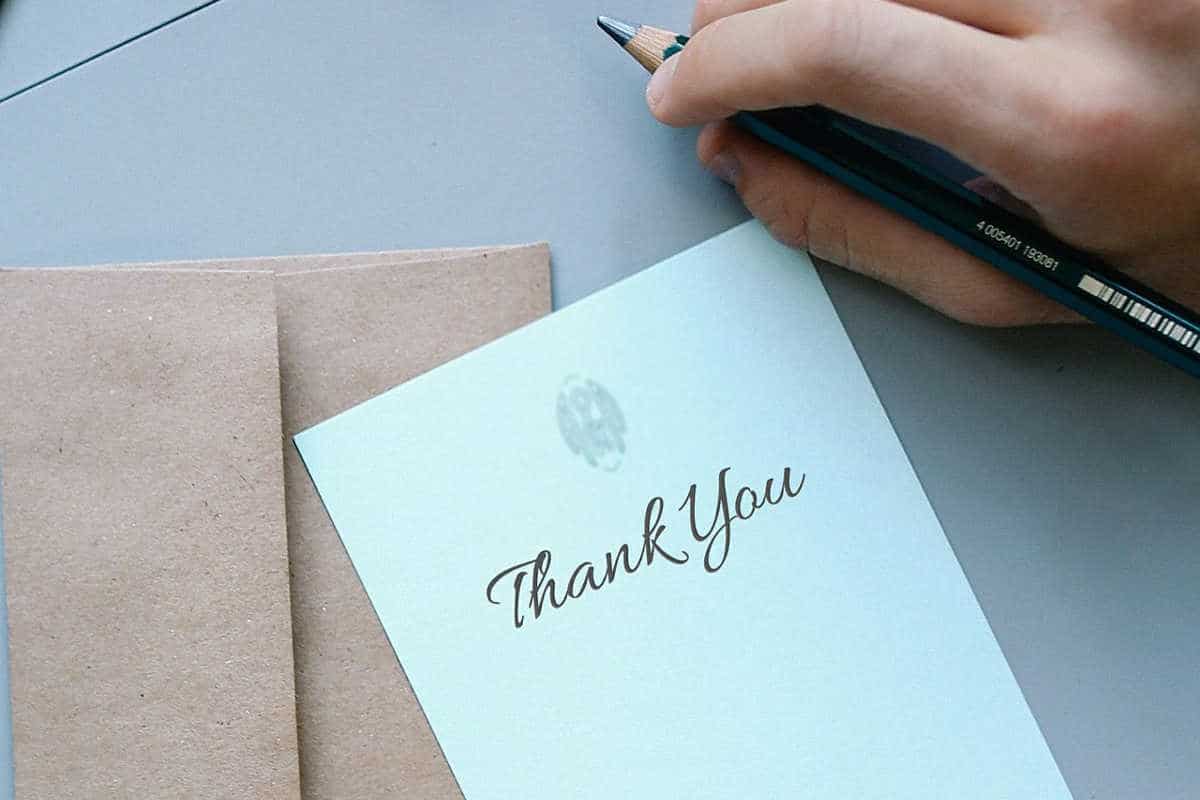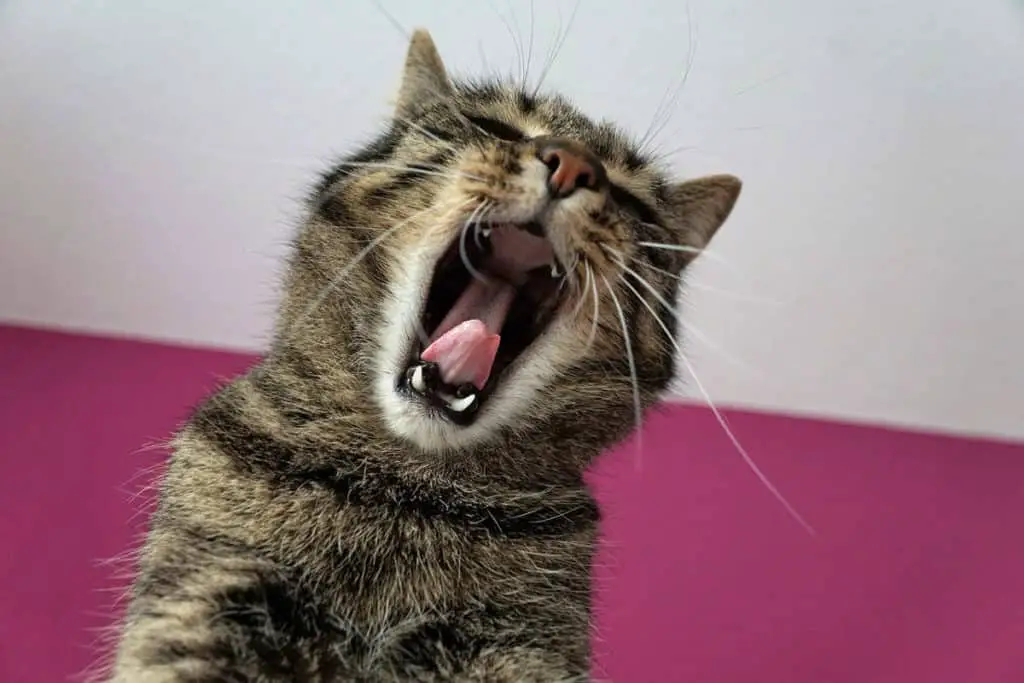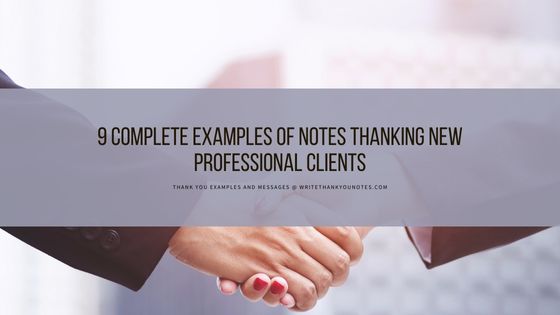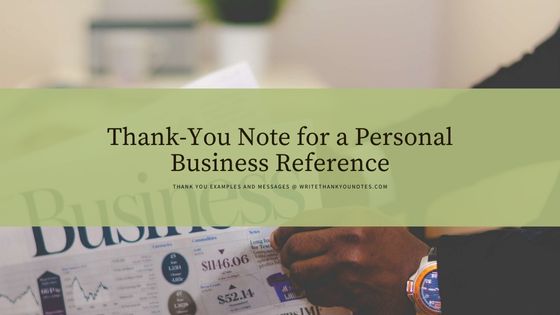Ah yes, the joys of exploring new career paths and promotion opportunities, swimming against a sea of other hopeful prospects. Don’t compete, set yourself apart from the herd (of fish?) with this simple action, and reap the rewards.
Do you need to send a handwritten thank-you note after your job interview? While you could write an email within a day or two (and an email follow-up is considered the bare minimum), do you want to define yourself as someone who does the minimum work required? No. You want results. Top performers know that after a job or work-related interview, a handwritten thank-you note is a strategic and appreciated action that distinguishes them from the crowd.
According to a Survey from TopResume, 68 percent of hiring managers say that whether or not a candidate sends a thank-you note, impacts their hiring decision.
Here’s an entire post on how to write an effective follow-up letter: What to Say in a Thank-You Note After the Interview
Why you Need to Write an Thank-You Note Following a Business Interview, and the Impact of Doing So:
• Establish yourself as a high-performer and an asset to anyone you represent.
• Show appreciation for the employer’s interest in you.
• Reiterate your interest in the position and in the organization.
• Review or remind the employer about your qualifications for the position. If you thought of something you forgot to mention in the interview, mention it in your follow-up / thank-you letter.
• Demonstrate that you have good manners and know when and how to write a thank-you letter. This also shows that you will reflect a positive image to clients once hired by the company.
What Kind of a Note and Card Stock to Choose
If you elect to send a handwritten note, make sure you use quality stationery card stock. Your note is a reflection of you, and you want to give your hiring crew something memorable to hold onto. As for type of note card, a blank thank-you card in which you handwrite your own message, is a solid choice.
Something Simple
The card design should be reflective of your industry and personality – crazy colors and an offside joke may work well for social media roles or advertising firms (depending on the workplace culture), but boring white or otherwise plain cards and simple patterns are a safe bet for most situations and work best for more traditional industries and tentative relationships. You don’t need something super-flashy to establish yourself – you’ve already set yourself apart by your words and the fact that you’ve taken the effort to handwrite a card.
Quality Card Stock and Stationery
- 65 lb cover weight / 176 gsm card stock is a lighter weight card stock, suitable enough for postcards. Paper punching, die cutting and folding is easy. Easy to print on most home printers. Card stock that is labeled 90 lb index weight would be similar to a 65 lb cover weight card stock.
- 80 lb cover weight / 216 gsm card stock is a very popular medium-weight card stock, and will work with almost any type of printer. Used for DIY invitations, card-making, scrapbooking, flyers, postcards, die-cutting, menus, craft projects, business cards. 110 lb index weight card stock (199 gsm) would be a similar stock to 80 lb card stock.
- 100 lb cover weight / 270 gsm card stock begins to get into the heavier weight card stock. This stock cover is often used for flyers, signs, invitations, and invitation backings. 140# Index stock (253 gsm) is similar to 100 lb cover weight card stock. It is a popular choice for DIY wedding invitations, but not all printers can work with it.
- 110 lb cover weight / 298 gsm card stock and up is also great for thank-you note cards.
BondText
WeightCover
WeightIndexPts.GSM - Grams/sq. MeterUses20
50
3.8
75.2
all-purpose
paper
24
60
4.890.3
laser and inkjet printing
40
100
56
7.3
151 gsm
65
8
~177 gsm
post cards
80
9.5
216 gsm
post cards, biz cards, invitations
89
241gsm
90
250 gsm
94
140
10.5252 gsmDIY wedding invitations
Handwriting the Note
Here is where the roller-ball meets the plant fibers. Pick up a comfortable pen and get to it. Maintain a conversational tone, yet be respectful and professional.
If you sit down with a trusty pen and look deep into the abyss that is the blank card before you, feeling yourself increasingly resistant and confused and not knowing what to say, that’s ok; we are a generation of entitled know-nothings. Kidding. Deliberate practice makes geniuses of us all.
Remember the purpose of this note:
- to thank the person for their time (and anything else specific to your interaction),
- let them know you were paying attention in the interview (reference something that was discussed and remind what you bring to their company)
- Reiterate your interest (if applicable) and let them know the next action (you’re eagerly awaiting their decision, or you will check-in next week to see how the process is moving along).
See examples of what to write in the job interview follow-up note, here.
Related Questions:
When and How to Send The Note?
To avoid the unpredictability of snail mail, just drop your addressed note under the employer’s/interviewer’s door, or in their mail slot (if you are familiar with their office), or hand-deliver to the front desk.
If you know the hiring team is looking to hire ASAP, write your thank-you immediately following your interview. Sit in the waiting room or go grab a coffee somewhere nearby, and pull out your thank-you card stationery. Walk back to the office, and hand your freshly penned note to the receptionist.
Or, if you know there is time before the decision happens, simply post and mail the letter.
Use your discretion. if you live in a large city, the mail delivery standard is usually 1 business day. If you live in the middle of nowhere, your letter will be sent to the main hub, sorted, then sent out for delivery, adding an extra day or three to delivery times.
DO NOT hand a thank-you note to the interviewer during the actual interview. Just… don’t. A simple verbal “thank-you” will do for the time being.
Are Follow-up Thank-You Notes Required?
If you respect yourself and other people, heck yes, you should absolutely send a thank-you note.
Even if you no longer want the position and discovered some terrible secret scandal about the company, or hated the interviewer or totally bombed, or
More tips
Obvious one – check over your note before sending. Spelling mistakes aren’t auto-corrected in the handwritten medium (yet).
Don’t expect a response to your note. The offer or decline is usually the next time you’ll hear anything.
Send a separate note to everyone – recruiters and each individual hiring manager.



